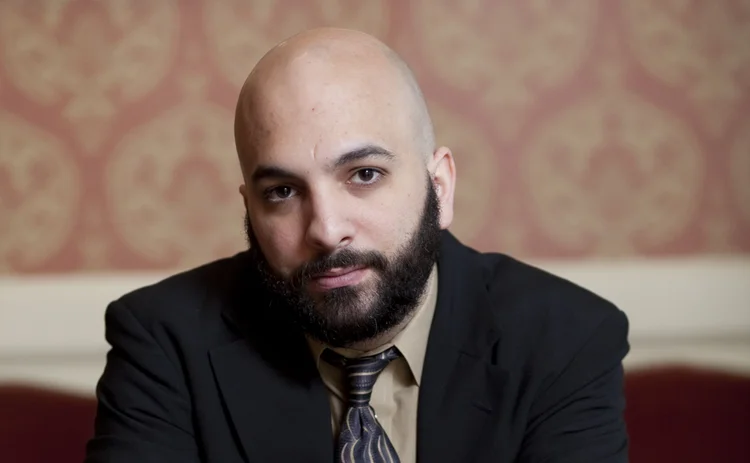Anthony Malakian: An Offer Technologists Can’t Refuse

A valuable trait to have in journalism is a skeptical ear—one tends to be fed a lot of half-truths and outright falsities in this profession. As I noted in my case study of State Street Global Advisors (SSgA), which will be available online next week, technologists want to believe that they’re valued by the business leaders—the head trader, the chief investment officer and, of course, the CEO. And any smart institution will value those individuals, the back-office heroes.
The point of that feature, though, was to show, from a business-user’s perspective, how one firm has tied itself to its technology department to figure out how best to handle the influx of data it faces, and how it has gone about consolidating systems in order to create a flexible organization. It’s an example of business desires leading technology decisions.
Increasingly, I’ve heard about IT and the business working in lock-step—a smooth, collaborative entity where everyone is equal. This view was espoused recently at the Buy-Side Technology European Summit. This is perhaps a CTO’s dream of a utopian society, but one only has to look at the pay scales of business leaders and technologists—and also where budgets are directed—to see that equality-for-all is not the true mantra of the day.
As far as I can tell, the traders and portfolio managers are still the driving force of systems and software investment—with regulators rounding out the Holy Trinity—at most buy-side firms, and that’s not a bad thing.
A Trusted Consigliere
Consider this: CTOs and chief information officers want to have an equal say as to the implementations that they oversee. In order to make that happen, there needs to be a lot of meetings with the chief investment officer and head traders. Now, those investment officers and traders have their own wish lists. They must run their requests by the COOs, CFOs and legal departments. Then, everyone comes together with the CEO and in most cases the executive committee to hash out their ideas and decide who will get what. That’s a lot of meetings and equality that needs to filter throughout an organization.
Stop portraying business and IT as equals. Technology provides the tools to execute on the business’ ideas.
My suggestion is this: Stop portraying business and IT as equals. Technology provides the tools to execute on the business’ ideas; it seems silly for business leaders to have to have an equal voice alongside technology. What’s important is that IT has an ear in the room, rather than a full-throated retort when these decisions are being made.
Numerous Meetings
Chris Rice, SSgA’s global head of trading, says he’s had numerous meetings where business leaders sat around and discussed strategy, and after the meetings John Wysocki, SSgA’s head of trading technology, would advise Rice on what was possible and what might be a stretch.
“I bring our technology team in on everything we do because everything we do is technology-enabled,” Rice says. “Bringing that team into the business and having them involved with every conversation is essential. I walk out of a lot of my staff meetings and John will say, ‘I heard what you guys were talking about and maybe you should think about it like this,’ and he’ll turn my thinking and I’ll say, ‘You know what, you’re right.’ I’m a bit fanatical about it—we’re very tightly enmeshed with IT.”
That’s collaboration at its best. If you have smart technologists with an ear in the room, collaboration is possible. The head of technology should be viewed as Tom Hagen, a character from The Godfather—as everything in life, for me, relates to that film. Hagen was “consigliere,” or advisor, to crime boss Don Vito Corleone.
If the traders run the shop, that firm will eventually find itself in trouble with regulators and/or investors. You can’t just tell IT to sit in the corner—technologists need to have input, if not ultimate decision-making power. Sometimes there will be friction as to the best way to go about a new project, but if technologists are trusted and smart, then there isn’t any real need to pretend that they’re on equal footing. That’s not a bad thing—it’s reality.
Only users who have a paid subscription or are part of a corporate subscription are able to print or copy content.
To access these options, along with all other subscription benefits, please contact info@waterstechnology.com or view our subscription options here: http://subscriptions.waterstechnology.com/subscribe
You are currently unable to print this content. Please contact info@waterstechnology.com to find out more.
You are currently unable to copy this content. Please contact info@waterstechnology.com to find out more.
Copyright Infopro Digital Limited. All rights reserved.
As outlined in our terms and conditions, https://www.infopro-digital.com/terms-and-conditions/subscriptions/ (point 2.4), printing is limited to a single copy.
If you would like to purchase additional rights please email info@waterstechnology.com
Copyright Infopro Digital Limited. All rights reserved.
You may share this content using our article tools. As outlined in our terms and conditions, https://www.infopro-digital.com/terms-and-conditions/subscriptions/ (clause 2.4), an Authorised User may only make one copy of the materials for their own personal use. You must also comply with the restrictions in clause 2.5.
If you would like to purchase additional rights please email info@waterstechnology.com
More on Emerging Technologies
Bank of America and AI, exchanges feud with researchers, a potential EU tax on US tech, and more
The Waters Cooler: Broadridge settles repos in real time, Market Structure Partners strikes back at European exchanges, and a scandal unfolds in Boston in this week’s news roundup.
Bloomberg rolls out GenAI-powered Document Insights
The data giant’s newest generative AI tool allows analysts to query documents using a natural-language interface.
Tape bids, algorithmic trading, tariffs fallout and more
The Waters Cooler: Bloomberg integrates events data, SimCorp and TSImagine help out asset managers, and Big xyt makes good on its consolidated tape bid in this week’s news roundup.
DeepSeek success spurs banks to consider do-it-yourself AI
Chinese LLM resets price tag for in-house systems—and could also nudge banks towards open-source models.
Standard Chartered goes from spectator to player in digital asset game
The bank’s digital assets custody offering is underpinned by an open API and modular infrastructure, allowing it to potentially add a secondary back-end system provider.
Saugata Saha pilots S&P’s way through data interoperability, AI
Saha, who was named president of S&P Global Market Intelligence last year, details how the company is looking at enterprise data and the success of its early investments in AI.
Data partnerships, outsourced trading, developer wins, Studio Ghibli, and more
The Waters Cooler: CME and Google Cloud reach second base, Visible Alpha settles in at S&P, and another overnight trading venue is approved in this week’s news round-up.
Are we really moving on from GenAI already?
Waters Wrap: Agentic AI is becoming an increasingly hot topic, but Anthony says that shouldn’t come at the expense of generative AI.








